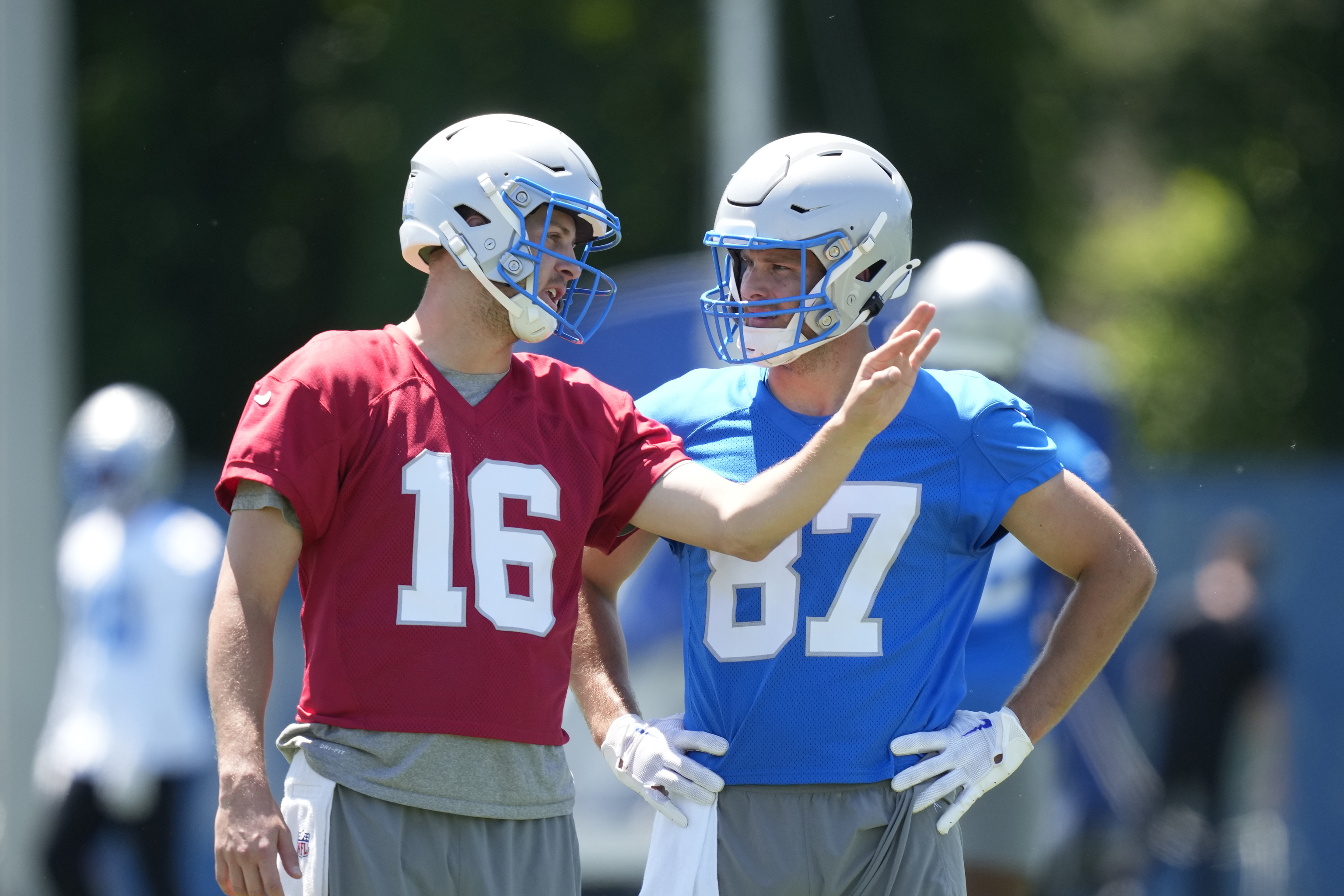He wasn't exactly thrilled they drafted a tight end but once he had a chance to reflect, Mayer decided to embrace the situation. Having two tight ends, after all, could give Las Vegas a strategic edge.
"How are you going to stop them?" asked Mayer, who was drafted in the second round last year. "Brock is a lot of speed. I've gotten a little bit faster. I think there's a ton of things. No. 1, in the run game, Brock will be able to help me out with blocking. But then, No. 2, who's going to guard both of us? If you put a (linebacker), put a small safety here, I'm a big body, Brock is a big body. So it's going to be a lot of fun."
The good times won't happen just in Las Vegas, though two-tight end sets are becoming less common.
Fewer than 8,000 plays in the NFL last season included two tight ends. That continued a general trend since 2012, when the total dropped below 10,000 as teams began to go to three- and four-receiver sets to spread out defenses and take advantage of rules changes that benefit offenses.
Since such plays are being run less often, teams that employ a double-tight end look gain a potential advantage.
Teams run at a nearly 50% higher rate with two tight ends on the field but pass much more effectively in those scenarios against defenses less equipped to stop offenses through the air. Teams with two tight ends average 6.57 yards per drop back compared to 5.41 with one or none.
"You start getting two on the field and now the defense (asks), 'How do you match that?'" Green Bay Packers tight ends coach John Dunn said. "We talk about it in our room all the time, the more you can do, the better we're going to be as an offense, the better we're going to be as a unit, the better we're going to be as a group."
The Packers were third in the league last season with 345 plays run using two-tight end sets. They were also third with a 54.8% success rate, defined by a team's progress toward picking up a first down or scoring a touchdown.
The divisional rival Detroit Lions weren't far behind with 274 such plays, ranking ninth, with a league-best 57.3% success rate.
The Lions, coming off their first two-win postseason since 1957, were active in free agency and aggressive in the draft this offseason in the hopes of reaching the Super Bowl for the first time in team history.
While matching the San Francisco 49ers' offer for backup tight end Brock Wright may not have been viewed as a major move, the defending NFC North champions believe it was significant because the fourth-year pro can be paired with second-team All-Pro tight end Sam LaPorta.
The 6-foot-5, 250-pound Wright played on 44% of Detroit's offensive snaps last season and was usually asked to block from a three-point stance, freeing LaPorta to stand up and line up in the slot or out wide as one of Jared Goff's go-to receivers.
LaPorta, who played on 83% of Detroit's offensive plays, had the most catches (86) by an NFL rookie tight end and had 889 yards receiving and 10 touchdowns to rank among the top-producing first-year players in league history. Detroit drafted him in the second round last year out of Iowa, which has produced some of the NFL's best tight ends.
"(Wright) allows us to do things personnel-wise with LaPorta in the game," Lions coach Dan Campbell said. "He does a lot of the dirty work. He's kind of one of those unsung heroes, and you've got to have them. It was big for us to be able to get him back."
The Buffalo Bills opened last season using a lot of two-tight end sets with Dawson Knox lining up on the opposite end of the line from rookie Dalton Kincaid.
That changed when offensive coordinator Ken Dorsey was fired in midseason and the Bills went a little away from the set under interim (and now permanent) OC Joe Brady. It wasn't just philosophical, however. Knox was eased back in after missing five games with a wrist injury.
Brady also could install more two-tight end sets to create more balance so quarterback Josh Allen doesn't take so much of the offense on his shoulder and legs. Establishing more of an effective ground game behind that formation is a posibility.
"When you have guys like Dalton Kincaid and Dawson Knox, it gives you a lot," Brady said. "It opens up a lot of doors because they can play outside, block in line. ... We'd love to grow that package and just get them comfortable and putting them in different situations, different spots that they haven't been in and see how they kind of respond to it."
The Raiders were 28th with just 175 such plays, but this season they could be among the leaders. Using two tight ends fits coach Antonio Pierce's preference for playing physical football.
Las Vegas also needs to improve an offense that last season was 23rd with 19.5 points per game. Going with a formation that is less familiar to opposing defenses could be a way to achieve that aim.
Bowers especially has the ability to line up in multiple spots, and he and Mayer could present defenses with the challenge of trying to find both players. That's already happening in OTAs as Raiders defensive coordinator Patrick Graham practices against multiple looks.
"It forces us to go through a bunch of communication," Graham said. "It's good to get that work."
